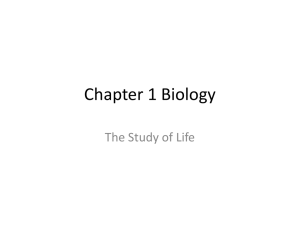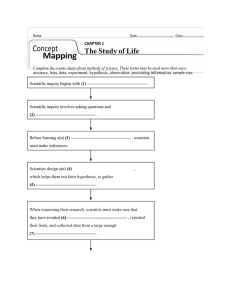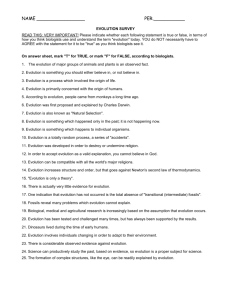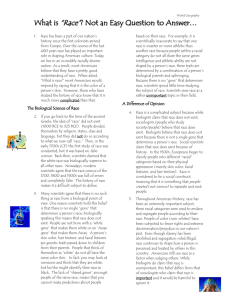Are our priorities in S&T distorted? G. Padmanaban
advertisement
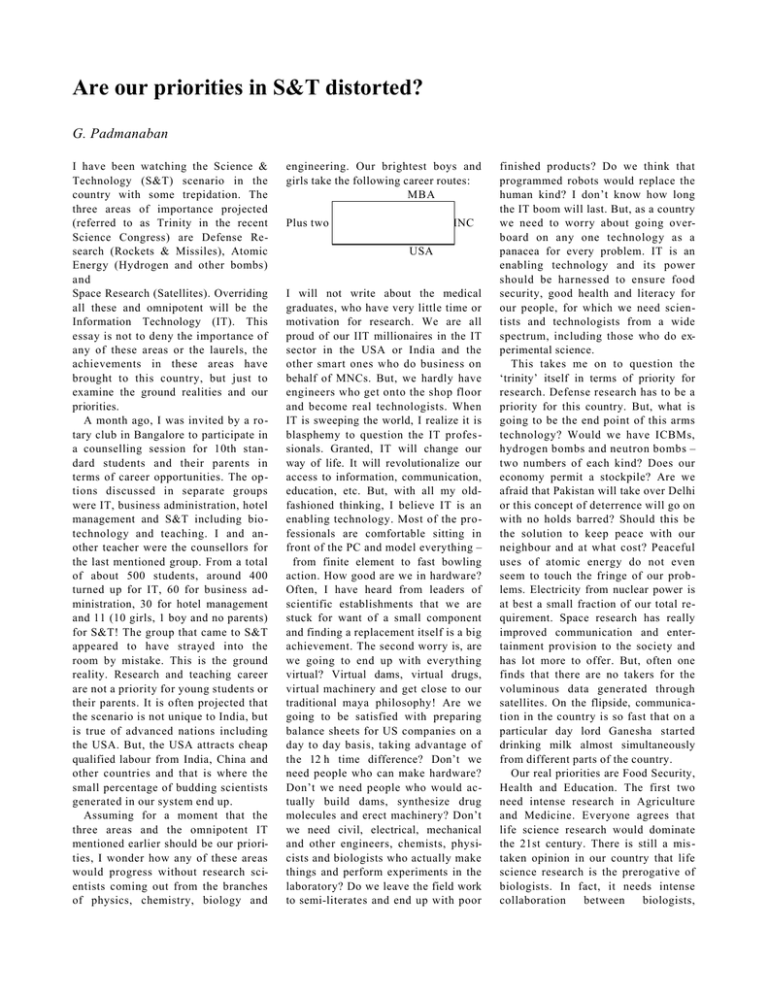
Are our priorities in S&T distorted? G. Padmanaban I have been watching the Science & Technology (S&T) scenario in the country with some trepidation. The three areas of importance projected (referred to as Trinity in the recent Science Congress) are Defense Research (Rockets & Missiles), Atomic Energy (Hydrogen and other bombs) and Space Research (Satellites). Overriding all these and omnipotent will be the Information Technology (IT). This essay is not to deny the importance of any of these areas or the laurels, the achievements in these areas have brought to this country, but just to examine the ground realities and our priorities. A month ago, I was invited by a rotary club in Bangalore to participate in a counselling session for 10th standard students and their parents in terms of career opportunities. The options discussed in separate groups were IT, business administration, hotel management and S&T including biotechnology and teaching. I and another teacher were the counsellors for the last mentioned group. From a total of about 500 students, around 400 turned up for IT, 60 for business administration, 30 for hotel management and 11 (10 girls, 1 boy and no parents) for S&T! The group that came to S&T appeared to have strayed into the room by mistake. This is the ground reality. Research and teaching career are not a priority for young students or their parents. It is often projected that the scenario is not unique to India, but is true of advanced nations including the USA. But, the USA attracts cheap qualified labour from India, China and other countries and that is where the small percentage of budding scientists generated in our system end up. Assuming for a moment that the three areas and the omnipotent IT mentioned earlier should be our priorities, I wonder how any of these areas would progress without research scientists coming out from the branches of physics, chemistry, biology and engineering. Our brightest boys and girls take the following career routes: MBA Plus two IIT MNC USA I will not write about the medical graduates, who have very little time or motivation for research. We are all proud of our IIT millionaires in the IT sector in the USA or India and the other smart ones who do business on behalf of MNCs. But, we hardly have engineers who get onto the shop floor and become real technologists. When IT is sweeping the world, I realize it is blasphemy to question the IT profes sionals. Granted, IT will change our way of life. It will revolutionalize our access to information, communication, education, etc. But, with all my oldfashioned thinking, I believe IT is an enabling technology. Most of the professionals are comfortable sitting in front of the PC and model everything – from finite element to fast bowling action. How good are we in hardware? Often, I have heard from leaders of scientific establishments that we are stuck for want of a small component and finding a replacement itself is a big achievement. The second worry is, are we going to end up with everything virtual? Virtual dams, virtual drugs, virtual machinery and get close to our traditional maya philosophy! Are we going to be satisfied with preparing balance sheets for US companies on a day to day basis, taking advantage of the 12 h time difference? Don’t we need people who can make hardware? Don’t we need people who would actually build dams, synthesize drug molecules and erect machinery? Don’t we need civil, electrical, mechanical and other engineers, chemists, physicists and biologists who actually make things and perform experiments in the laboratory? Do we leave the field work to semi-literates and end up with poor finished products? Do we think that programmed robots would replace the human kind? I don’t know how long the IT boom will last. But, as a country we need to worry about going overboard on any one technology as a panacea for every problem. IT is an enabling technology and its power should be harnessed to ensure food security, good health and literacy for our people, for which we need scientists and technologists from a wide spectrum, including those who do experimental science. This takes me on to question the ‘trinity’ itself in terms of priority for research. Defense research has to be a priority for this country. But, what is going to be the end point of this arms technology? Would we have ICBMs, hydrogen bombs and neutron bombs – two numbers of each kind? Does our economy permit a stockpile? Are we afraid that Pakistan will take over Delhi or this concept of deterrence will go on with no holds barred? Should this be the solution to keep peace with our neighbour and at what cost? Peaceful uses of atomic energy do not even seem to touch the fringe of our problems. Electricity from nuclear power is at best a small fraction of our total requirement. Space research has really improved communication and entertainment provision to the society and has lot more to offer. But, often one finds that there are no takers for the voluminous data generated through satellites. On the flipside, communication in the country is so fast that on a particular day lord Ganesha started drinking milk almost simultaneously from different parts of the country. Our real priorities are Food Security, Health and Education. The first two need intense research in Agriculture and Medicine. Everyone agrees that life science research would dominate the 21st century. There is still a mis taken opinion in our country that life science research is the prerogative of biologists. In fact, it needs intense collaboration between biologists, OPINION chemists, physicists and engineers. The paradigm for drug discovery has changed. A revolution has taken place in the development of modern vaccines. Gene therapy holds promise for the treatment of genetic disorders, cancers and cardiac myopathies. Transgenic technology offers scope to protect crops against pests and improve the nutritive quality of grains and vegetables. Integrated technologies in agriculture are needed to provide food security for the burgeoning population. Environment and biodiversity pose major scientific challenges. Another area of importance for research is in the realm of material science and technology. Amazing advances have taken place in miniaturization, nanomaterials and molecular electronics that will have wide applications including in the fields of disease diagnosis and medical instrumentation. This is not to say that theoretical areas of research are less important. India has had traditional strengths in mathematics and theoretical physics. These are areas where the country can assume global scientific leadership and the availability of powerful computers can be a real boon enabling major breakthroughs. At least a small percentage of brilliant scientists should be allowed to pursue ‘crazy’ ideas, which may not apparently have any potential application. It is also necessary to set societal goals for the application of S&T. If I were to set such a goal for this country in terms of S&T applications for the next decade, it would be towards eradication of malnutrition and protection against infectious diseases among children below the poverty line. This is an achievable goal. This would call for intense R&D to improve the nutritive quality of foods, provision of clean drinking water and production of modern efficacious vaccines for children, through the latest available technologies. The main problems to be tackled are protein–calorie malnutrition, iron and vitamin deficiency. Molecular biologists, nutritionists and food technologists should tackle this problem on a war footing. The American Academy of Pediatrics has a schedule for 10 childhood vaccines, which is also necessary for our children to escape child mortality. Modern vaccine technology should be used to replace the old versions and introduce newer ones wherever necessary. The necessary regulatory and certification mechanisms should be in place and the proverbial delays have to be eliminated. The country needs to have a national midday meal and immunization programme for the deprived children. All other efforts including improvement of hygiene need not be considered as mutually exclusive. The success in this goal would call for a major cooperative effort between basic and social scientists, NGOs and the political system. In the S&T budget, if one deducts the amounts earmarked for defence research, atomic energy and space, the budget available for civilian research is miniscule. Education budget is predominantly meant for primary education and eradication of illiteracy. No body can question this priority. But, higher education is left to fend for itself and how are we going to uphold the slogan Jaivigyan? Education needs to create a scientific temper among the people of this country. There is recent news that the S&T budget will be increased by 30% and one hopes that it will filter into areas of extramural research. What needs to be done? India needs to have a policy on research as a career. No original technology in any sector will emerge without a research base. The most important thing is to attract young students to a research career, irrespective of the label whether it is basic or applied. The Indian Institute of Science, DST, CSIR and Space Department have all started programmes to ‘catch them young’. Many other institutions offer summer training programmes. All these include scholarships and other monetary incentives together with acclimatization in a research environment in the best of the institutions, without any bonds to be executed by the beneficiaries. The net result is that the young students find themselves more qualified to go and settle in the USA! OPINION However, the hope is that even if 10– 15% of all these students decide to take up a research career in India, it would make a difference. More important is to make research career attractive in terms of monetary benefits, research infrastructure and conducive environment. It is necessary for big private industrial houses to start research centres with scope for long term basic research, in addition to short term interest in developing processes and products for commercialization. Are’nt there a dozen industrial houses in this country that can afford to start such research cen-tres? Won’t NRIs come forward to start such centres? We need to have philanthropic donors who would es - tablish trusts, foundations and societies to support research in specific areas, as is the case in advanced nations. The funding procedures, delays and bureaucratic hierarchies in government supported research institutions need a drastic change, if a vibrant academic environment is to be created. There should be takers for indigenously developed technologies. Many of us look foolish for having spent time and effort to develop indigenous technologies that go abegging. Above all, universities should be looked upon as the bedrock of scientific research and all efforts made to provide a creative environment. If we don’t set our R&D priorities right, In- dia will continue to be a dark subcontinent with disease, hunger and illiteracy, occasionally illuminated by flashes from bombs, missiles, satellites and IT professionals. ACKNOWLEDGEMENT. This article is a slightly extended version of the write-up under the same title that appeared in the Times of India, dated 11 January 2000. G. Padmanaban is in the Department of Biochemistry, Indian Institute of Science, Bangalore 560 012.
